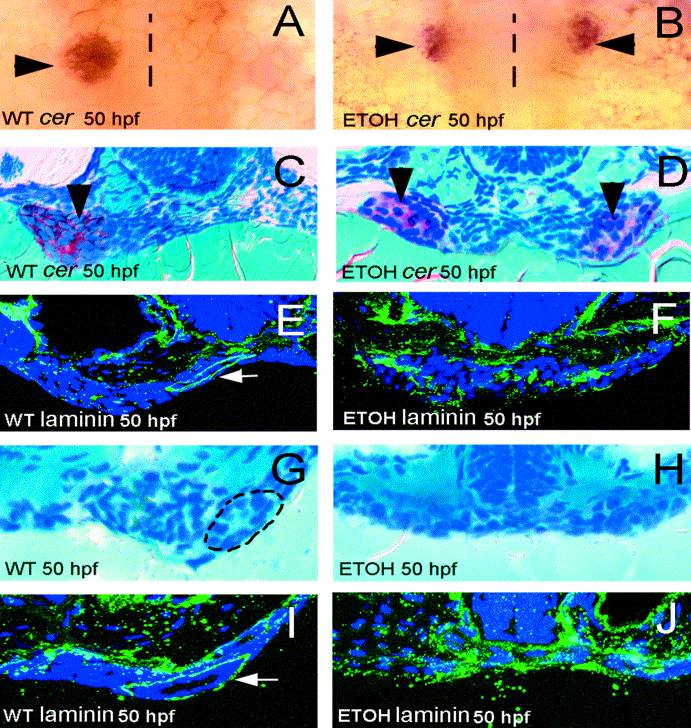Fig. 4 The zebrafish liver and pancreas form independently of the gut tube. (A, B) Whole-mount RNA in situ hybridization using a ceruloplasmin (cer) probe, dorsal view. Compared with WT (A), liver duplication (arrows) is seen in 50-hpf ethanol-treated embryos (B). (C, D) Histological cross-sections through the liver of 50-hpf WT (C) and ethanol-treated (D) embryos processed for cer in situs. Anterior endoderm spans the midline between the duplicated livers (arrows in D) of ethanol-treated embryos. (E, F) Laminin immunostainings from a comparable region of 50-hpf WT (E) and ethanol-treated (F) embryos. Organized endoderm present within the developing esophagus (white arrow) of 50-hpf WT embryos is not identifiable in ethanol-treated embryos (F). (G) Histological cross-sections through the rostral gut of 50-hpf WT embryo. (H) Endoderm in a comparable region of 50-hpf ethanol-treated embryo spans the midline and is unorganized. (I, J) Immunoreactive laminin in a WT 50-hpf embyro (I) encircles the gut tube, but is widely dispersed in unorganized endoderm of ethanol-treated embryos (J). Dotted line in (A, B) represents the embryonic midline. Circle in (G) surrounds the gut tube.
Reprinted from Developmental Biology, 255(1), Wallace, K.N. and Pack, M., Unique and conserved aspects of gut development in zebrafish, 12-29, Copyright (2003) with permission from Elsevier. Full text @ Dev. Biol.

